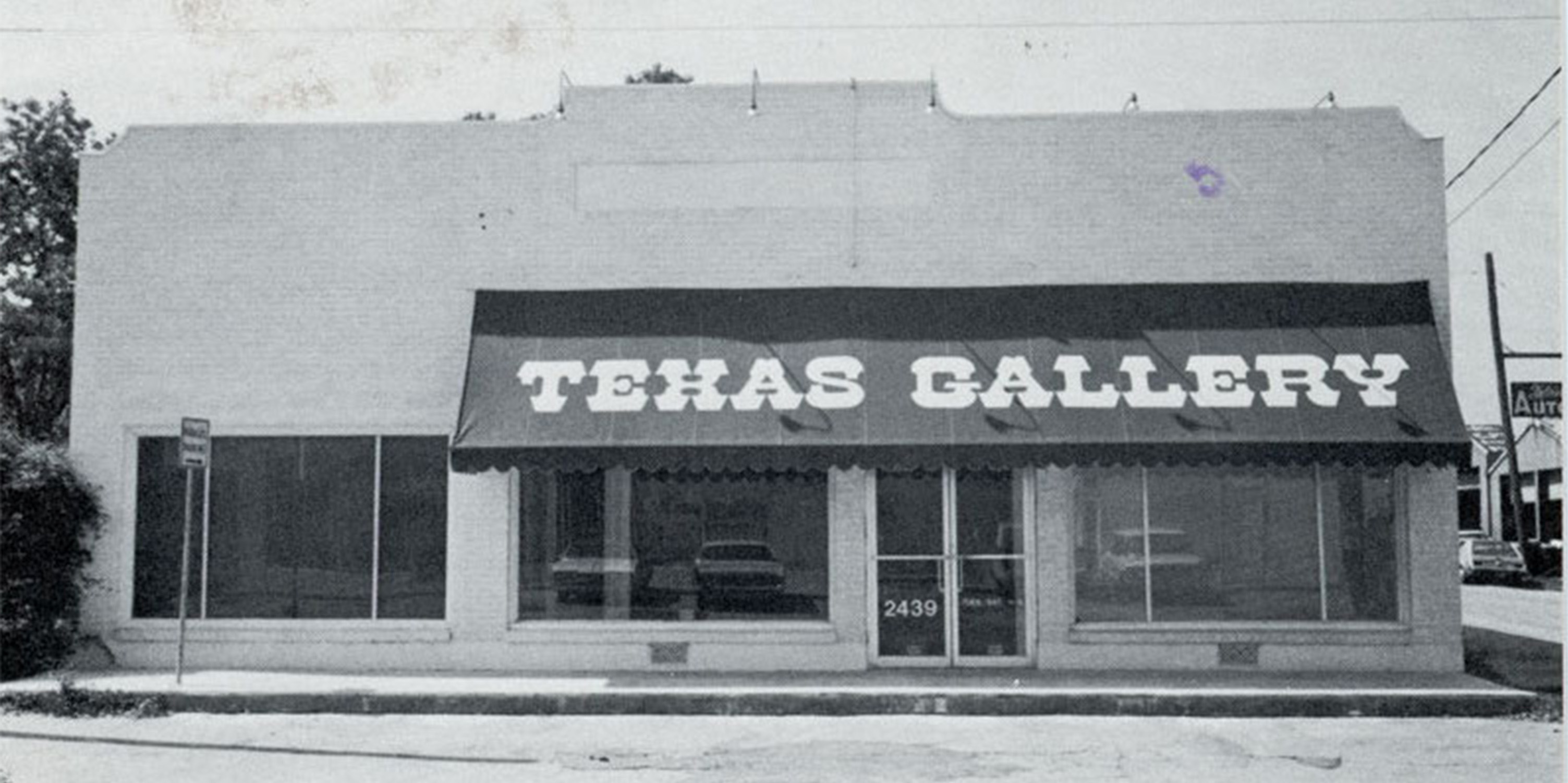
P.S.1, Project Studios One, Re-Opening and Re-Naming, Folded card with inserts, 1976
Folded card: Size: 5.5 x 8.5 inches
Sold
A large part of Gallery 98’s inventory dates from the 1970s and 1980, a period that saw the emergence of numerous artist-run galleries and alternative art spaces. Art was enjoying a renaissance, and New York City was its center.
The rapid growth of the city’s non-profit art spaces was rooted in a shortage of galleries and other exhibition venues. But there was also an emerging political awareness that some groups were being systematically excluded from mainstream art. Fortuitously, newly available government funding for the arts happily coincided with a new generation of artists that was energized by the period’s do-it-yourself spirit.
This newsletter features some of the more prominent of the new alternative venues of the 1970s and 80s. Each is represented here by a single card, so please click the links to see much more. We owe thanks to Alternative Histories: New York Art Spaces 1960 – 2010, an excellent catalogue published by the alternative space Exit Art in 2012.
Studio Museum in Harlem (1968)
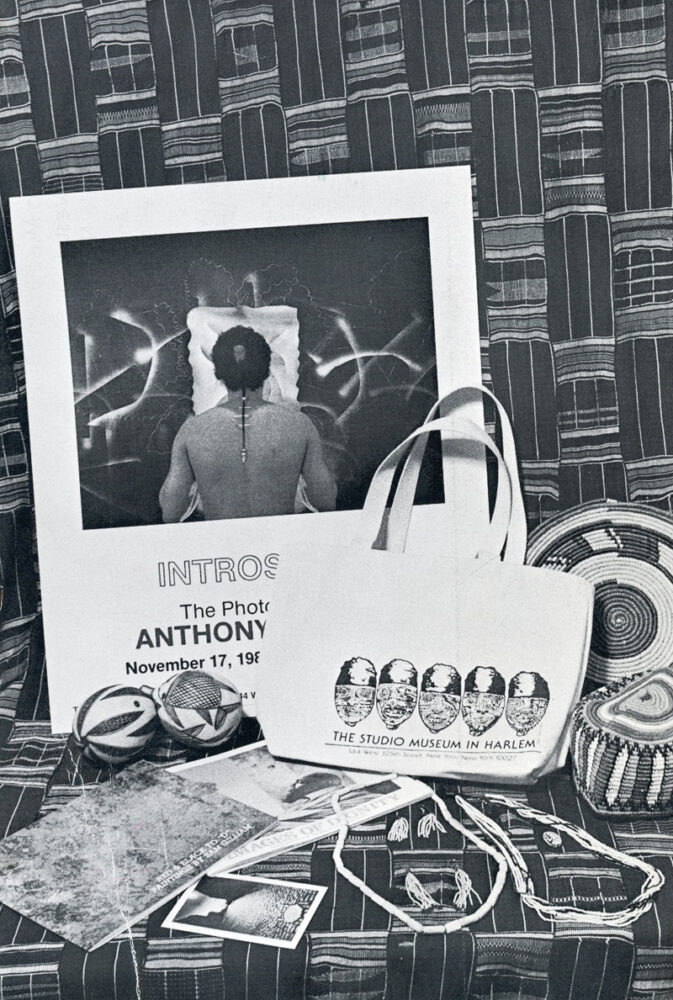
Studio Museum in Harlem, Grand Opening of the New Gift Shop, Card, 1982
Card: Size: 4.5 x 7 Inches
$100
The total exclusion of African American artists from a 1968 exhibition at the Whitney Museum precipitated the founding of the Studio Museum in an ambitious effort to promote artists of color. At first located in a small second-floor space, in 1982 the museum moved into its own building on 125th Street where it continues to thrive.
More Studio Museum in Harlem ephemera
Kitchen (1971)
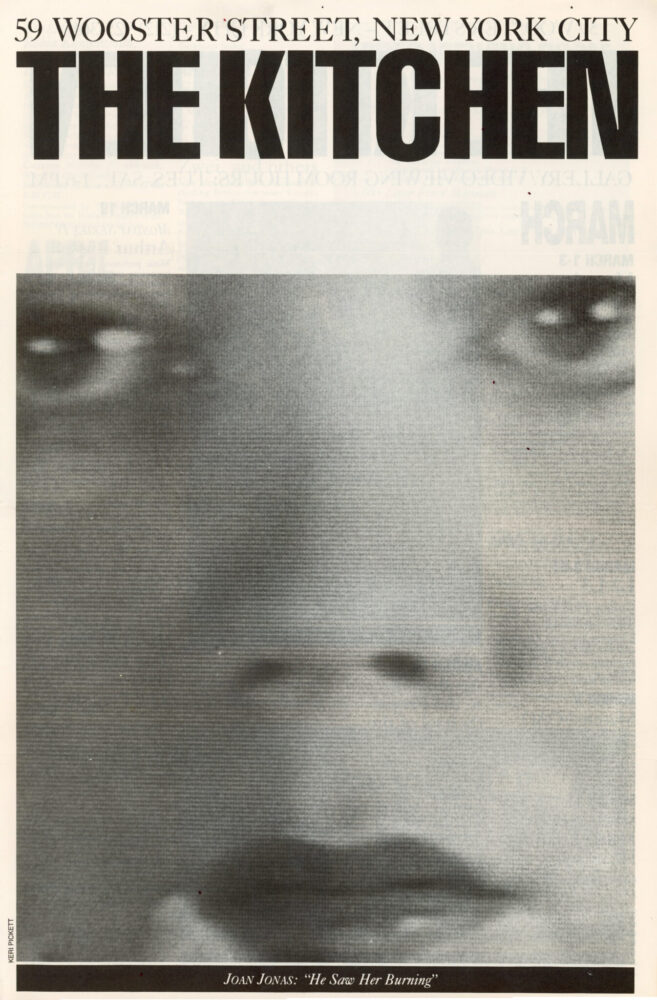
The Kitchen, Cover with Joan Jonas “He Saw Her Burning” by Kerri Picket, March/April Schedule on Folded Newsprint, 1984
Newsletter: Size: 11 x 17 inches
$100
As art moved away from painting and other traditional media, new venues were required to effectively showcase new art forms. The Kitchen filled the vacuum for video and performance art. Starting as an artists’ cooperative, it was later incorporated into a non-profit space that continues to operate today.
More Kitchen ephemera
A.I.R. Gallery (1972)

As the Guerrilla Girls later illustrated with posters citing art world statistics, women were another demographic group with only limited visibility in museums and in the commercial gallery system. A.I.R. (Artists in Residence, Inc.) still thrives as an artists’ cooperative founded by, and for women.
More A.I.R. ephemera
Artists Space (1972)

The advent of New York State and Federal funding for the arts was a major stimulus for the creation of non-profit alternative spaces. Artist Space was one of the first, and one of the most enduring. An early director, Helene Winer later created the commercial gallery Metro Pictures with many of the artists she first showed at Artist Space.
More Artists Space ephemera
Clocktower (1972) and P.S. 1 (1976)

Clocktower, Selections from the Collection of Dorothy and Herbert Vogel, Card, 1975
The Vogels (seen above) represented a new type of alternative art collector, purchasing low priced art on the salaries of a post office worker and a librarian. Card: Size: 4.5 x 7 Inches
$125
As more and more artists moved to New York in the 1970s, the need for exhibition space grew. The non-profit Institute for Art and Urban Resources was effective in both spotting available real estate, and promoting the economic benefits of art. The Clocktower was conspicuously located in the upper floors of a Tribeca building with a large clock. A few years later they converted a former school building P.S. 1 in Long Island City Queens into a huge alternative art space that is now part of the Museum of Modern Art.
More Clocktower ephemera
More P.S. 1 ephemera
Franklin Furnace (1976)
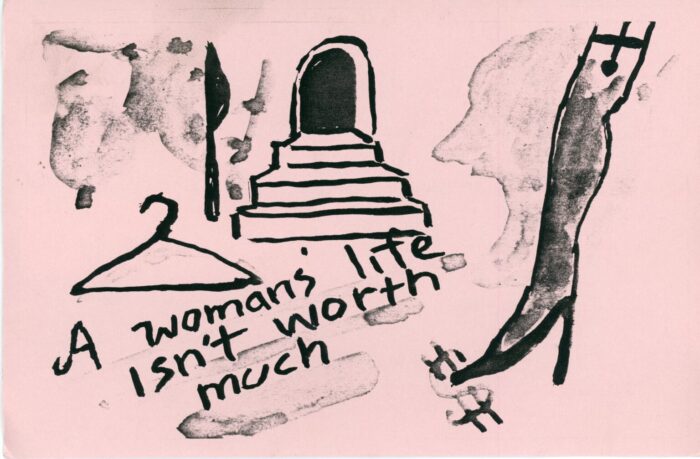
Karen Finley, A Woman’s Life Isn’t Worth Much, Franklin Furnace, Card, 1990
Card: Size: 5.5 x 8.5 Inches
$125
Franklin Furnace was first created as a showcase for artists’ books, another new medium that was largely outside the confines of the traditional art world. When they later sponsored performances by porn actress Annie Sprinkle and the feminist Karen Finley, Franklin Furnace became one of the targets in Senator Jesse Helms’ efforts to rescind federal funding for the arts. Today Franklin Furnace is affiliated with the Pratt Institute, and recognized as a major repository of the history of performance art.
More Franklin Furnace ephemera
Fashion Moda (1978)
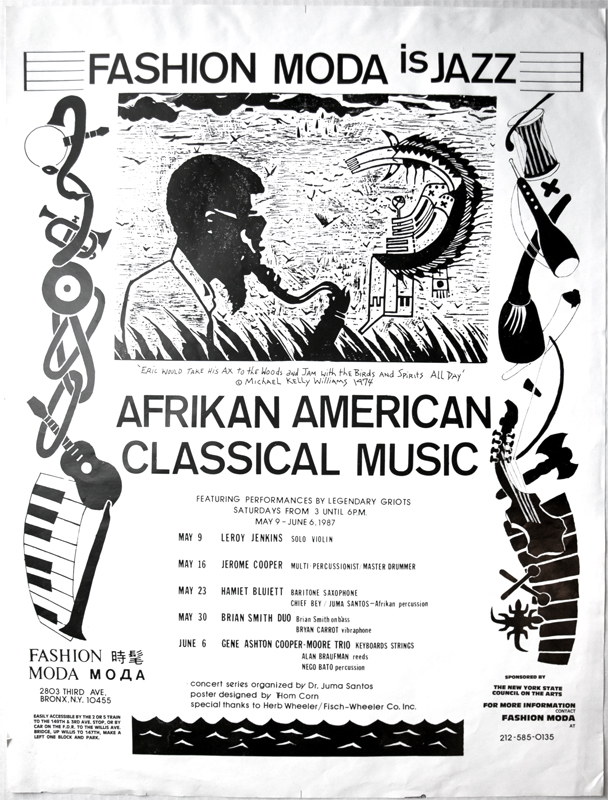
Thom Corn, Fashion Moda is Jazz: Afrikan American Classical Music, Poster, Fashion Moda, 1987
Poster: Size: 19 x 25.5 inches
$450
Artist Stefan Eins started Fashion Moda in a dilapidated South Bronx storefront to inspire young downtown artists with a radically different environment, and a new audience. It soon became an exhibition space for the neighborhood’s graffiti writers and an important connecting point bringing together outer borough artists with the Manhattan art scene.
More Fashion Moda ephemera
Gas Station (1982)
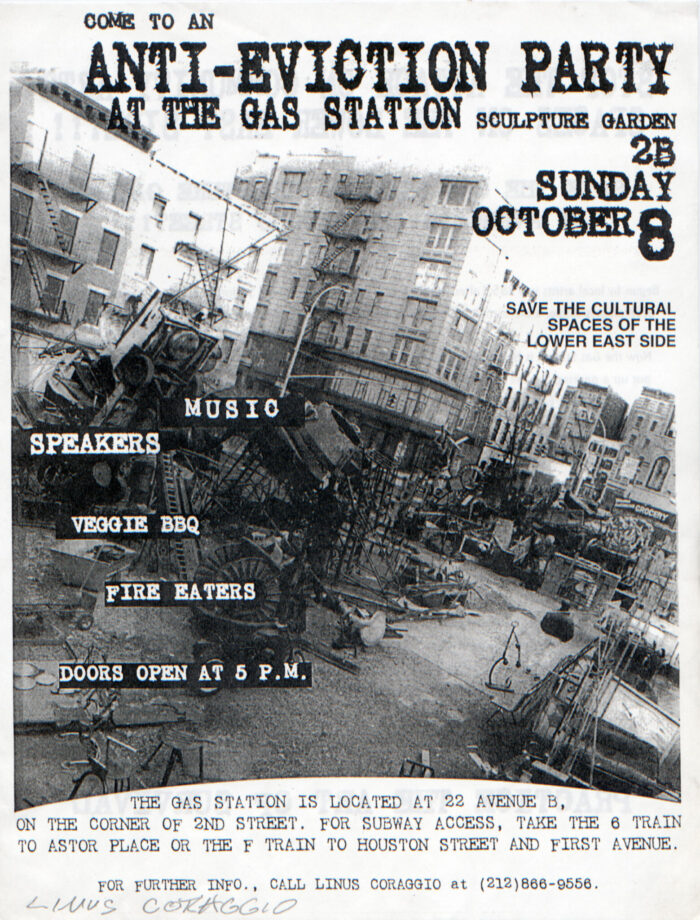
Linus Coraggio, Anti-Eviction Party, Gas Station (a.k.a. 2B), Flyer, 1995
Flyer: Size: 8.5 x 11 inches
$125
The Gas Station (also known as 2B after its location on the corner of 2nd Street and Avenue B) had a large outdoor space that contained an open-air furnace. It soon became a gathering place for sculptors connected to the so-called Rivington School, which in short order surrounded the lot with a forbidding wall of scrap-metal sculpture. While the Gas Station’s East Village location was originally part of a wasteland of abandoned buildings, as the neighborhood’s real estate prospects improved this raw art space became a victim of gentrification in 1995.
More Gas Station ephemera
Bullet Space (1985)
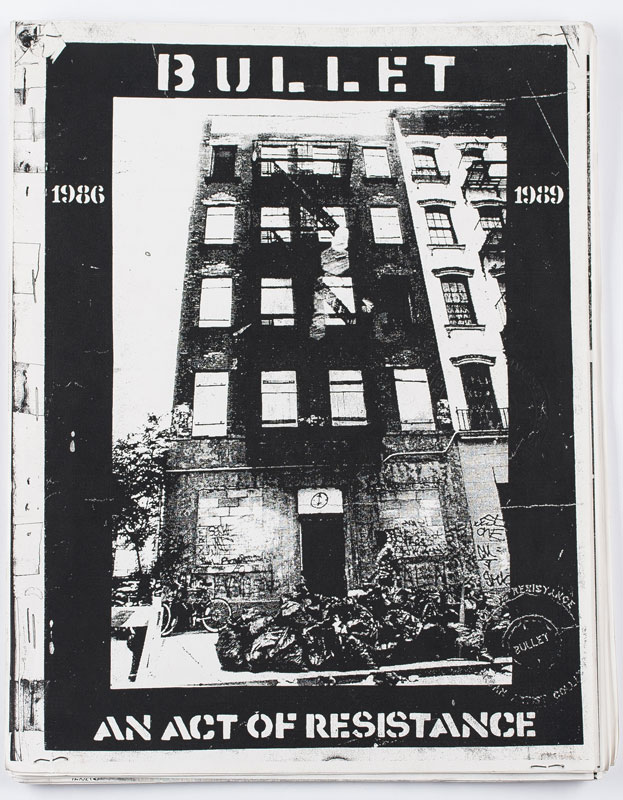
Bullet Space, Bullet: An Act of Resistance, Xerox ‘zine, 1989
Xerox zine with 20 double-sided pages: Size: 8.5 x 11 inches
For artists in the 1970s and 80s there was not only a shortage of exhibition space but also the need for inexpensive housing. Bullet Space emerged out of the squatting movement on the Lower East Side, when there was still an abundance of abandoned buildings. In this case, all the squatters were artists, and the ground floor of the building was designated a communal art space where they all could exhibit. The building with its exhibition space still survives, one of the very few squats that eventually became legal.
More Bullet Space ephemera











